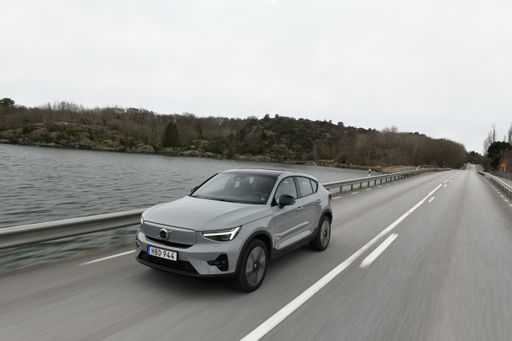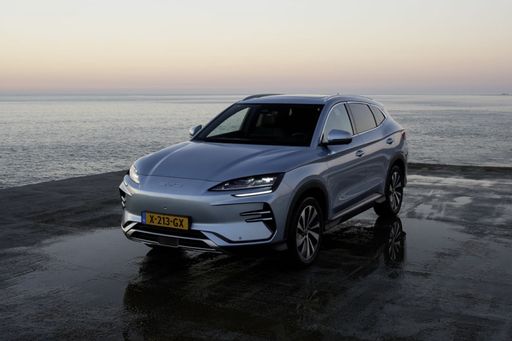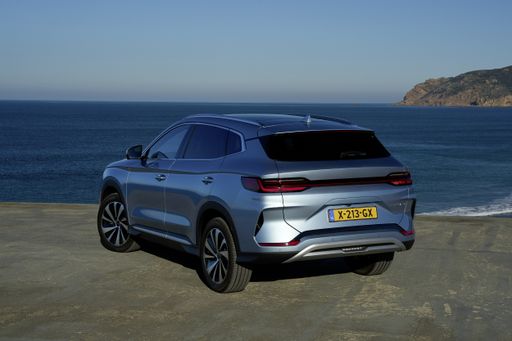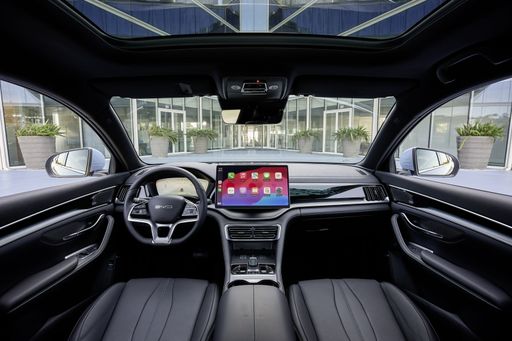BYD Seal U vs Volvo EC40 – Which one offers the better deal?
Everyday use, family trips or long-distance drives – here’s where the differences show.
Discover whether BYD Seal U or Volvo EC40 fits your lifestyle better.
Costs and Efficiency:
When it comes to price and running costs, the biggest differences usually appear. This is often where you see which car fits your budget better in the long run.
BYD Seal U has a noticeable advantage in terms of price – it starts at 34300 £, while the Volvo EC40 costs 46600 £. That’s a price difference of around 12343 £.
In terms of energy consumption, the advantage goes to the Volvo EC40: with 16.20 kWh per 100 km, it’s clearly perceptible more efficient than the BYD Seal U with 19.90 kWh. That’s a difference of about 3.70 kWh.
As for range, the Volvo EC40 performs to a small extent better – achieving up to 584 km, about 84 km more than the BYD Seal U.
Engine and Performance:
Power, torque and acceleration say a lot about how a car feels on the road. This is where you see which model delivers more driving dynamics.
When it comes to engine power, the Volvo EC40 has a clearly perceptible edge – offering 442 HP compared to 324 HP. That’s roughly 118 HP more horsepower.
In acceleration from 0 to 100 km/h, the Volvo EC40 is distinct quicker – completing the sprint in 4.60 s, while the BYD Seal U takes 5.90 s. That’s about 1.30 s faster.
There’s no difference in top speed – both reach 180 km/h.
There’s also a difference in torque: Volvo EC40 pulls to a small extent stronger with 670 Nm compared to 550 Nm. That’s about 120 Nm difference.
Space and Everyday Use:
Beyond pure performance, interior space and usability matter most in daily life. This is where you see which car is more practical and versatile.
Both vehicles offer seating for 5 people.
In curb weight, BYD Seal U is hardly perceptible lighter – 1940 kg compared to 2065 kg. The difference is around 125 kg.
In terms of boot space, the BYD Seal U offers evident more room – 552 L compared to 404 L. That’s a difference of about 148 L.
In maximum load capacity, the BYD Seal U performs a bit better – up to 1465 L, which is about 269 L more than the Volvo EC40.
When it comes to payload, Volvo EC40 slight takes the win – 435 kg compared to 410 kg. That’s a difference of about 25 kg.
Who comes out on top?
Overall, the Volvo EC40 shows itself to be performs better in key areas and secures the title of DriveDuel Champion.
It convinces with the more balanced overall package and proves to be the more versatile choice for everyday use.

Volvo EC40
BYD Seal U
The BYD Seal U presents itself as a sophisticated addition to the electric vehicle market, blending sleek design with cutting-edge technology. Its modern aesthetic is complemented by a spacious interior, offering both comfort and functionality for drivers and passengers alike. With advanced features prioritising sustainability and performance, it represents a bold step forward in eco-friendly motoring.
details @ press.bydauto.be
@ press.bydauto.be
 @ press.bydauto.be
@ press.bydauto.be
 @ press.bydauto.be
@ press.bydauto.be
Volvo EC40
The Volvo EC40 seamlessly combines cutting-edge technology with sleek Scandinavian design, offering a refined driving experience. With its advanced safety features and user-friendly infotainment system, this model caters to both seasoned drivers and modern tech enthusiasts. The vehicle's impressive efficiency and environmentally conscious engineering make it a standout choice for those seeking sustainability without compromising on style.
details @ media.volvocars.com
@ media.volvocars.com

|

|
|
|
|
Costs and Consumption |
|
|---|---|
|
Price
34300 - 39800 £
|
Price
46600 - 59000 £
|
|
Consumption L/100km
0.4 - 1.2 L
|
Consumption L/100km
-
|
|
Consumption kWh/100km
19.9 - 20.5 kWh
|
Consumption kWh/100km
16.2 - 17.3 kWh
|
|
Electric Range
70 - 500 km
|
Electric Range
488 - 584 km
|
|
Battery Capacity
-
|
Battery Capacity
67 - 79 kWh
|
|
co2
0 - 26 g/km
|
co2
0 g/km
|
|
Fuel tank capacity
60 L
|
Fuel tank capacity
-
|
Dimensions and Body |
|
|---|---|
|
Body Type
SUV
|
Body Type
SUV
|
|
Seats
5
|
Seats
5
|
|
Doors
5
|
Doors
5
|
|
Curb weight
1940 - 2147 kg
|
Curb weight
2065 - 2185 kg
|
|
Trunk capacity
425 - 552 L
|
Trunk capacity
404 L
|
|
Length
4775 - 4785 mm
|
Length
4440 mm
|
|
Width
1890 mm
|
Width
1873 mm
|
|
Height
1668 - 1670 mm
|
Height
1591 mm
|
|
Max trunk capacity
1440 - 1465 L
|
Max trunk capacity
1196 L
|
|
Payload
410 kg
|
Payload
395 - 435 kg
|
Engine and Performance |
|
|---|---|
|
Engine Type
Plugin Hybrid, Electric
|
Engine Type
Electric
|
|
Transmission
Automatic
|
Transmission
Automatic
|
|
Transmission Detail
CVT, Reduction Gearbox
|
Transmission Detail
Reduction Gearbox
|
|
Drive Type
Front-Wheel Drive, All-Wheel Drive
|
Drive Type
Rear-Wheel Drive, All-Wheel Drive
|
|
Power HP
218 - 324 HP
|
Power HP
238 - 442 HP
|
|
Acceleration 0-100km/h
5.9 - 9.6 s
|
Acceleration 0-100km/h
4.6 - 7.3 s
|
|
Max Speed
170 - 180 km/h
|
Max Speed
180 km/h
|
|
Torque
300 - 550 Nm
|
Torque
420 - 670 Nm
|
|
Number of Cylinders
4
|
Number of Cylinders
-
|
|
Power kW
160 - 238 kW
|
Power kW
175 - 325 kW
|
|
Engine capacity
1497 - 1498 cm3
|
Engine capacity
-
|
General |
|
|---|---|
|
Model Year
2024
|
Model Year
2024
|
|
CO2 Efficiency Class
B, A
|
CO2 Efficiency Class
A
|
|
Brand
BYD
|
Brand
Volvo
|
What drive types are available for the BYD Seal U?
The BYD Seal U is available as Front-Wheel Drive or All-Wheel Drive.
The prices and data displayed are estimates based on German list prices and may vary by country. This information is not legally binding.
